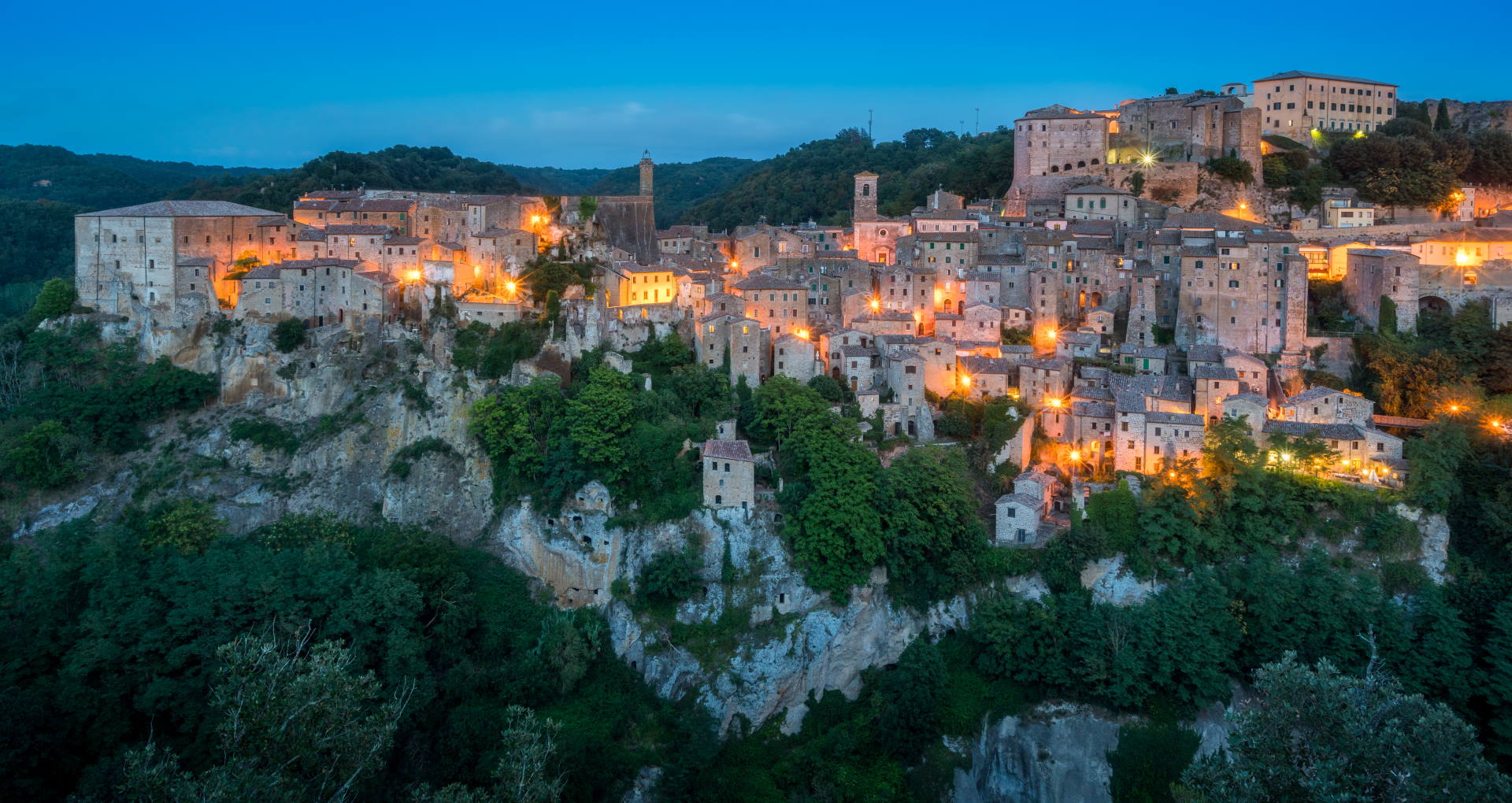
SORANO.
The Municipality of
Sorano
obtained, in 2004, the “Orange Flag“: the Italian Touring Club’s environmental tourism quality mark that is awarded to localities that meet particular analysis criteria related to the development of quality tourism. In 2004, the World Found Monument, a prestigious American cultural foundation, designated
the Hollow Ways
as World Heritage Sites to be protected.
It is one of the “Tuff Cities” , in addition to Sovana and Pitigliano, because of the type of rock (tuff, precisely, derived from volcanic ash spewed out during eruptions) in which they were built. Over the course of hundreds of thousands of years, the ash compacted to become solid rock, but managed to retain an appropriate softness that makes it suitable for construction.
The two main gates-the Porta di Sopra (Ferrini’s Arch) and Porto dei Merli (also known as Porta di Sotto)-are quite spectacular: the former is located at the foot of the Orsini Fortress and leads into the heart of Sorano’s historic center, characterized by stone walls and narrow alleys. The second gate is located near the Masso Leopoldino and is distinguished by its coat of arms.
The Orsini Fortress is one of the most impressive fortified structures built by the Aldobrandeschi family and later expanded by the Orsini Counts (nobles from Rome with properties in the southern area of Tuscany during the Renaissance period).
The fortress is also home to the Museum of the Middle Ages and the Renaissance, which boasts numerous ceramic works recovered from within the medieval jetties of Sorano, the neighboring town of Sovana and Castell’Ottieri, about 10 km away.
Throughout the town there are still very visible signs left by the important Jewish comity that grew up in Sorano, although it was not as large as that of Pitigliano. A few entrances still bear signs of the symbol (Mezuzah) and a grain bin used to give assistance to the poor in the community with the season’s harvest and, perhaps the most interesting, the hinge marks where the door that closed the ghetto at dusk was hung and reopened it to the city the next morning.
On Via Selvi, there is the Sorano Synagogue, probably dating back to the late 16th century, which remained one of Sorano’s most important places of worship until the late 19th century, when the Jewish community moved to Pitigliano. The Synagogue has recently been renovated.


